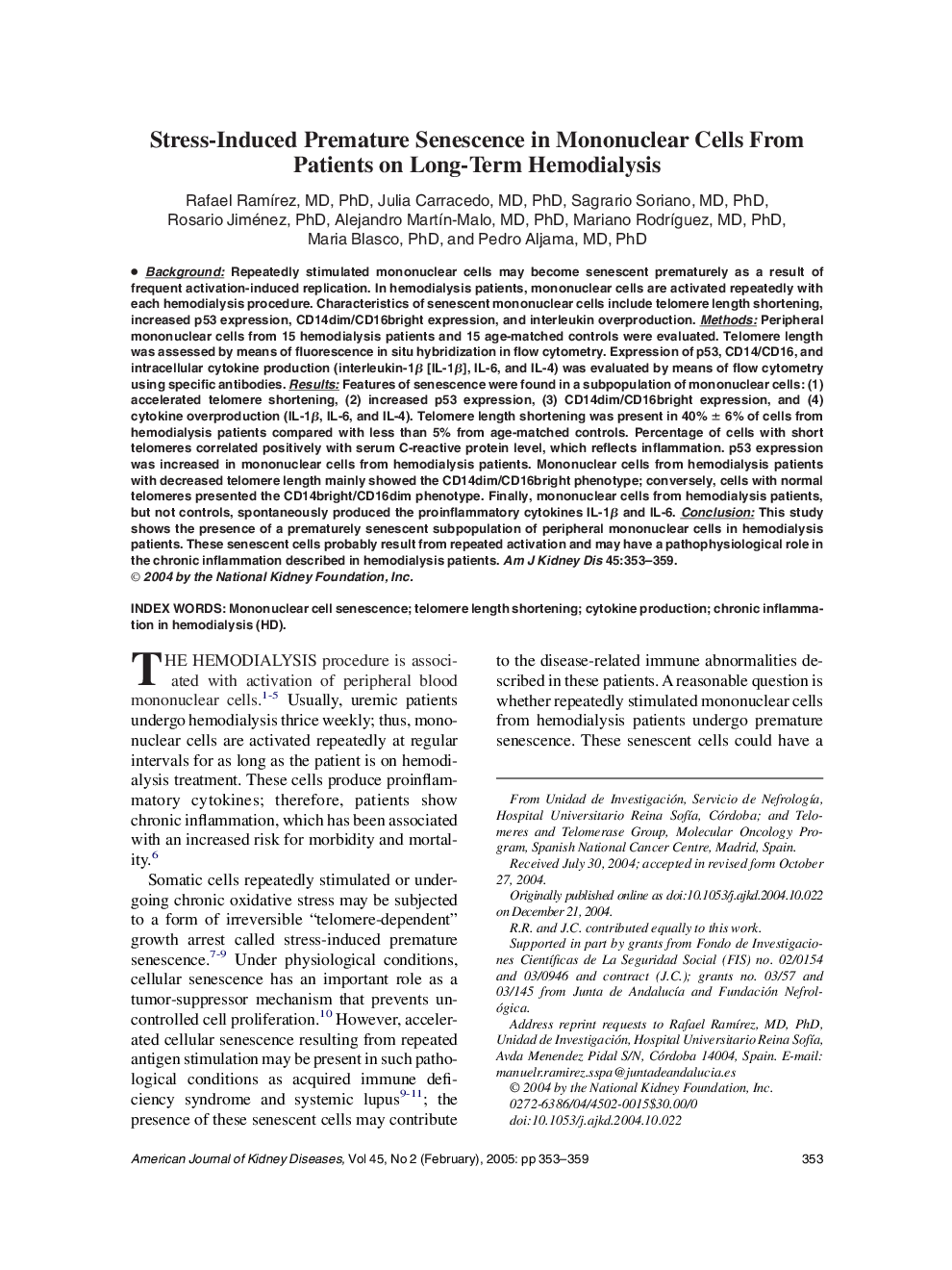| Article ID | Journal | Published Year | Pages | File Type |
|---|---|---|---|---|
| 10047749 | American Journal of Kidney Diseases | 2005 | 7 Pages |
Abstract
Background: Repeatedly stimulated mononuclear cells may become senescent prematurely as a result of frequent activation-induced replication. In hemodialysis patients, mononuclear cells are activated repeatedly with each hemodialysis procedure. Characteristics of senescent mononuclear cells include telomere length shortening, increased p53 expression, CD14dim/CD16bright expression, and interleukin overproduction. Methods: Peripheral mononuclear cells from 15 hemodialysis patients and 15 age-matched controls were evaluated. Telomere length was assessed by means of fluorescence in situ hybridization in flow cytometry. Expression of p53, CD14/CD16, and intracellular cytokine production (interleukin-1β [IL-1β], IL-6, and IL-4) was evaluated by means of flow cytometry using specific antibodies. Results: Features of senescence were found in a subpopulation of mononuclear cells: (1) accelerated telomere shortening, (2) increased p53 expression, (3) CD14dim/CD16bright expression, and (4) cytokine overproduction (IL-1β, IL-6, and IL-4). Telomere length shortening was present in 40% ± 6% of cells from hemodialysis patients compared with less than 5% from age-matched controls. Percentage of cells with short telomeres correlated positively with serum C-reactive protein level, which reflects inflammation. p53 expression was increased in mononuclear cells from hemodialysis patients. Mononuclear cells from hemodialysis patients with decreased telomere length mainly showed the CD14dim/CD16bright phenotype; conversely, cells with normal telomeres presented the CD14bright/CD16dim phenotype. Finally, mononuclear cells from hemodialysis patients, but not controls, spontaneously produced the proinflammatory cytokines IL-1β and IL-6. Conclusion: This study shows the presence of a prematurely senescent subpopulation of peripheral mononuclear cells in hemodialysis patients. These senescent cells probably result from repeated activation and may have a pathophysiological role in the chronic inflammation described in hemodialysis patients.
Keywords
Related Topics
Health Sciences
Medicine and Dentistry
Nephrology
Authors
Rafael MD, PhD, Julia MD, PhD, Sagrario MD, PhD, Rosario PhD, Alejandro MD, PhD, Mariano MD, PhD, Maria PhD, Pedro MD, PhD,
